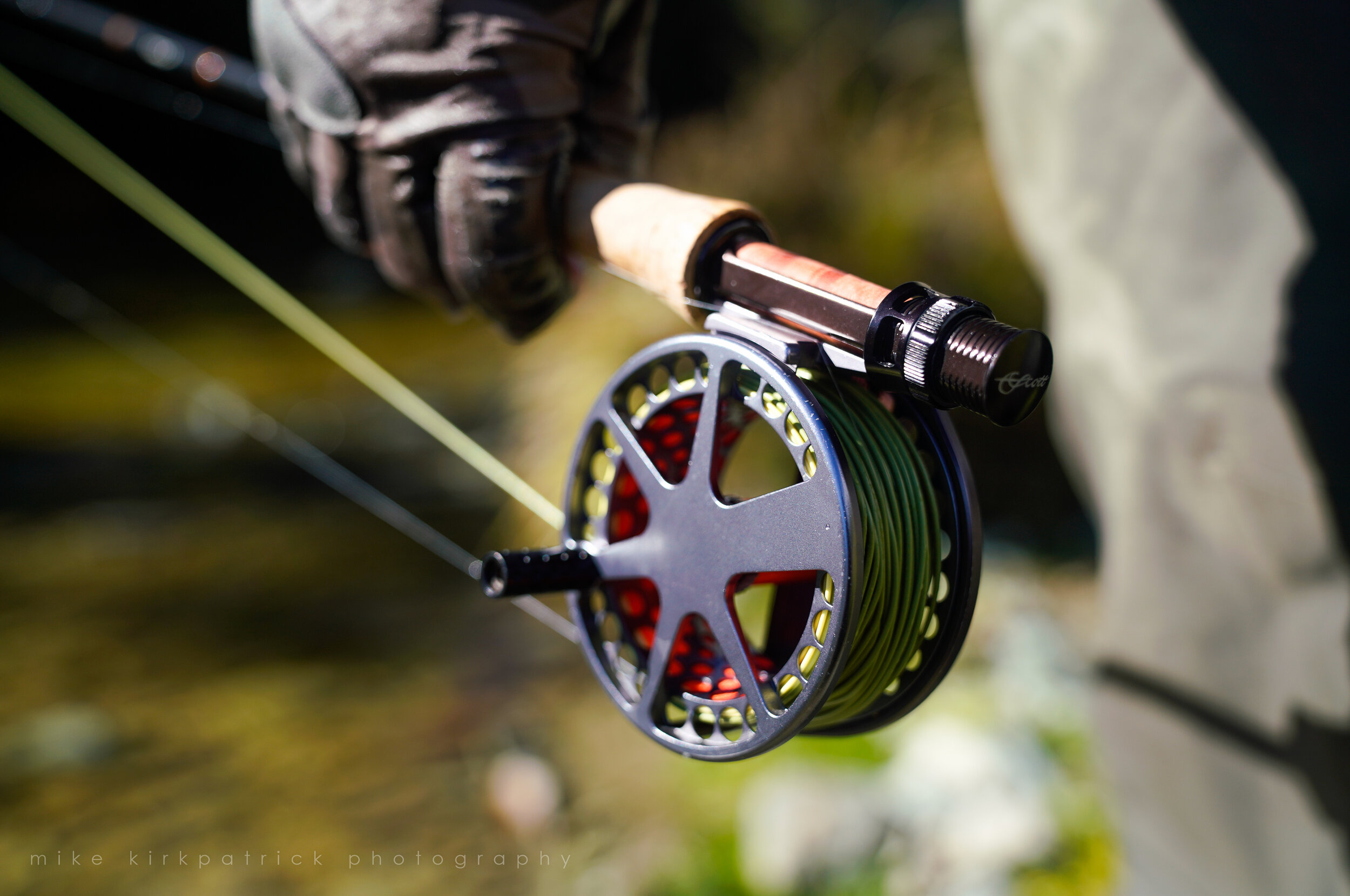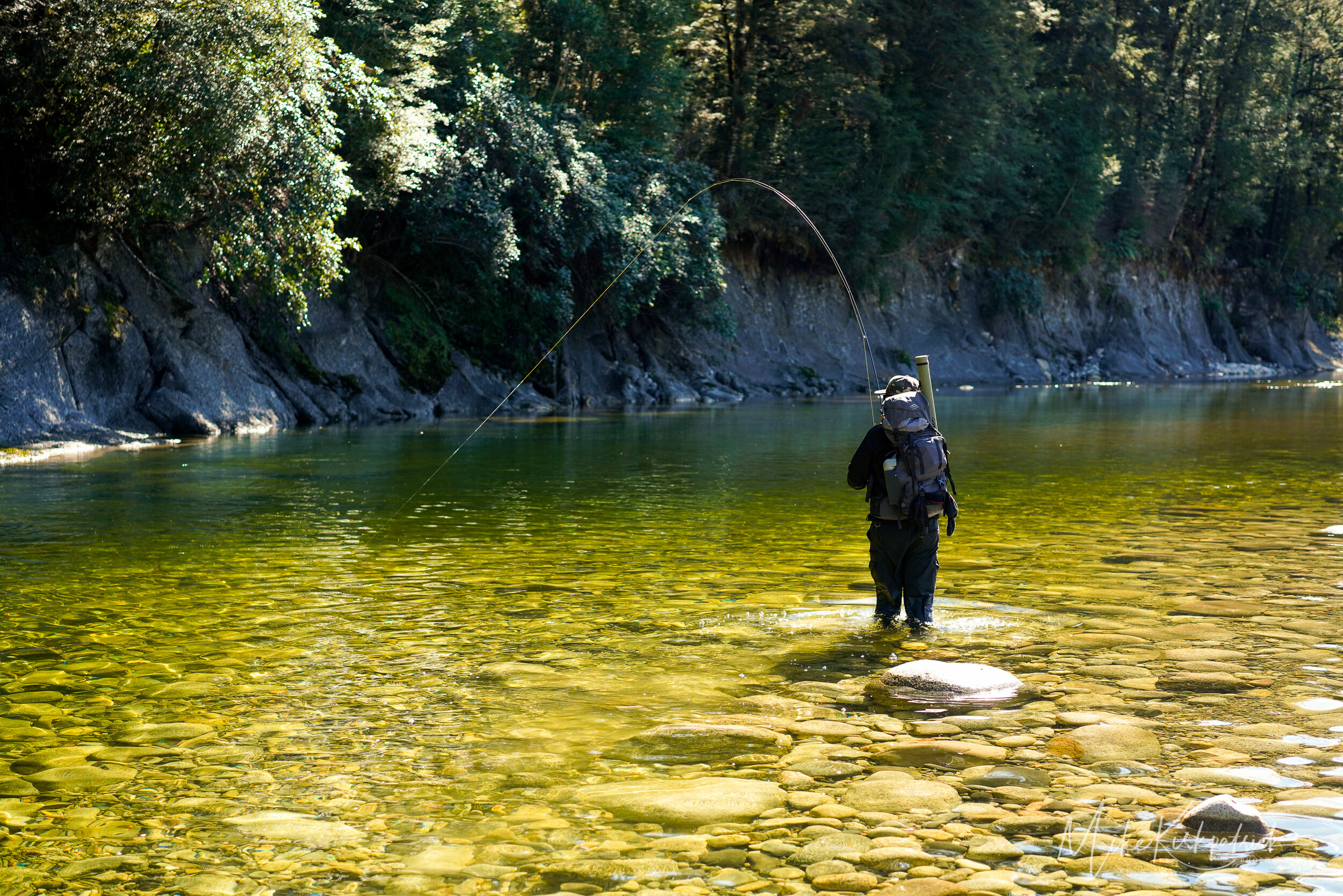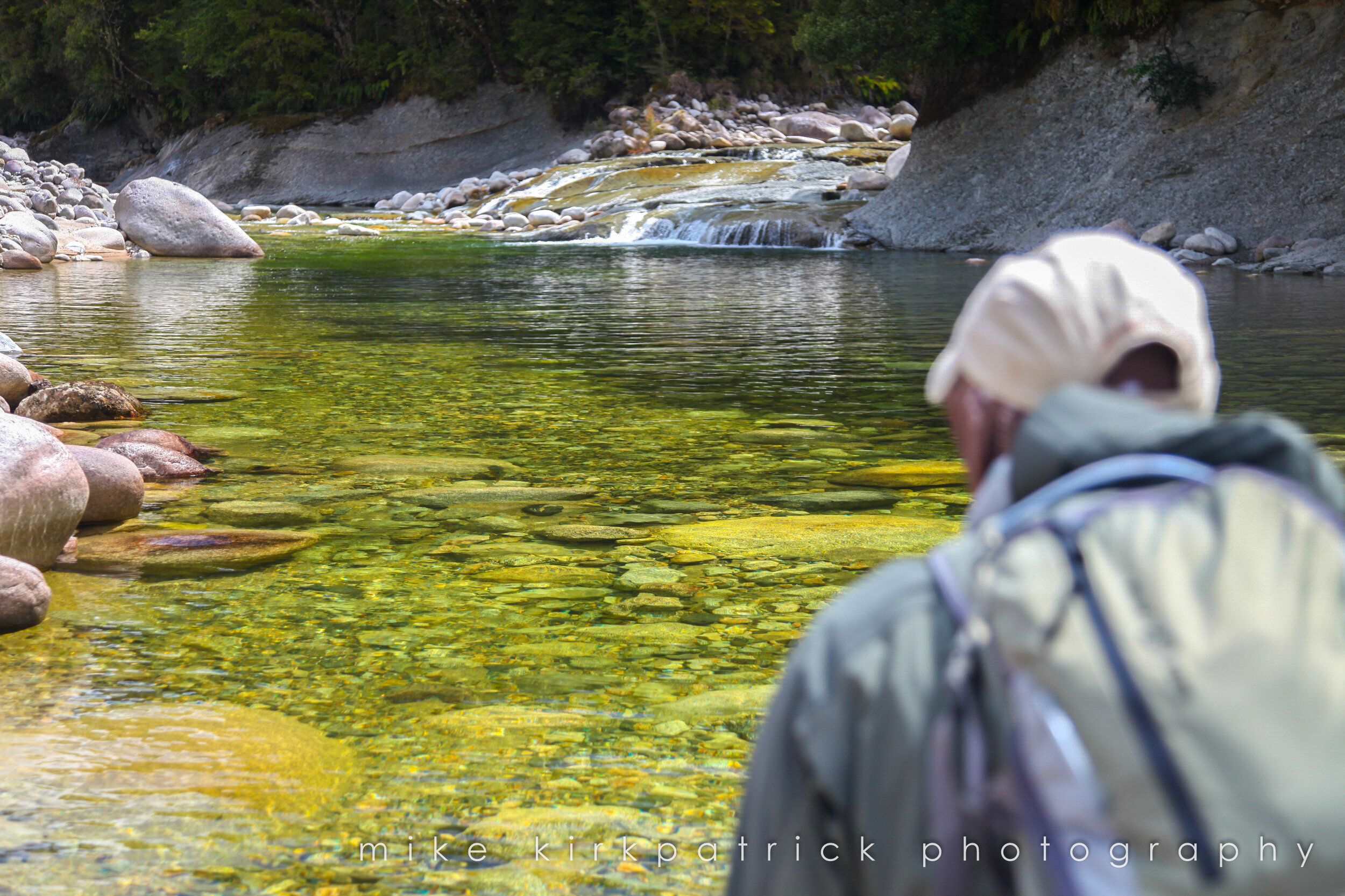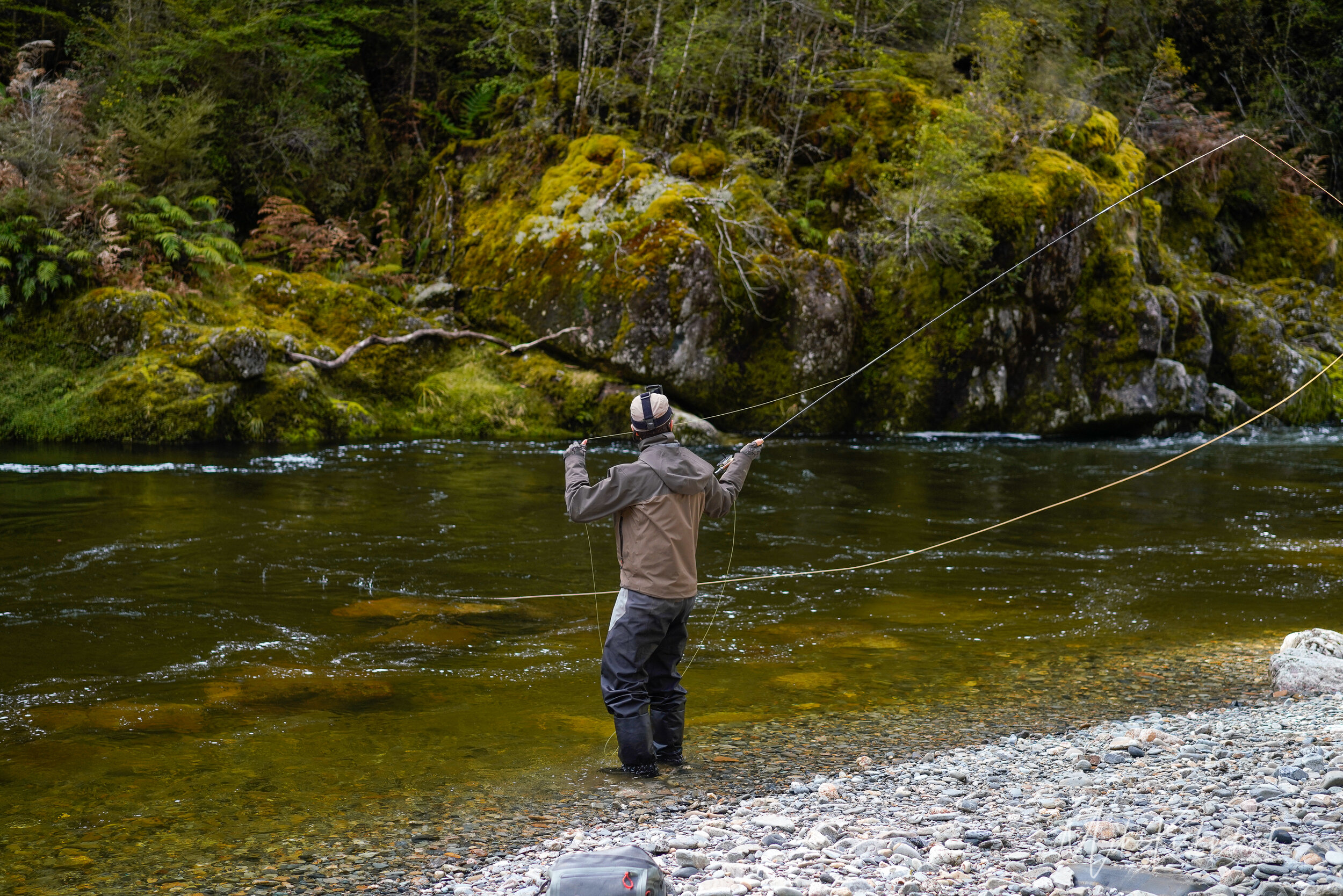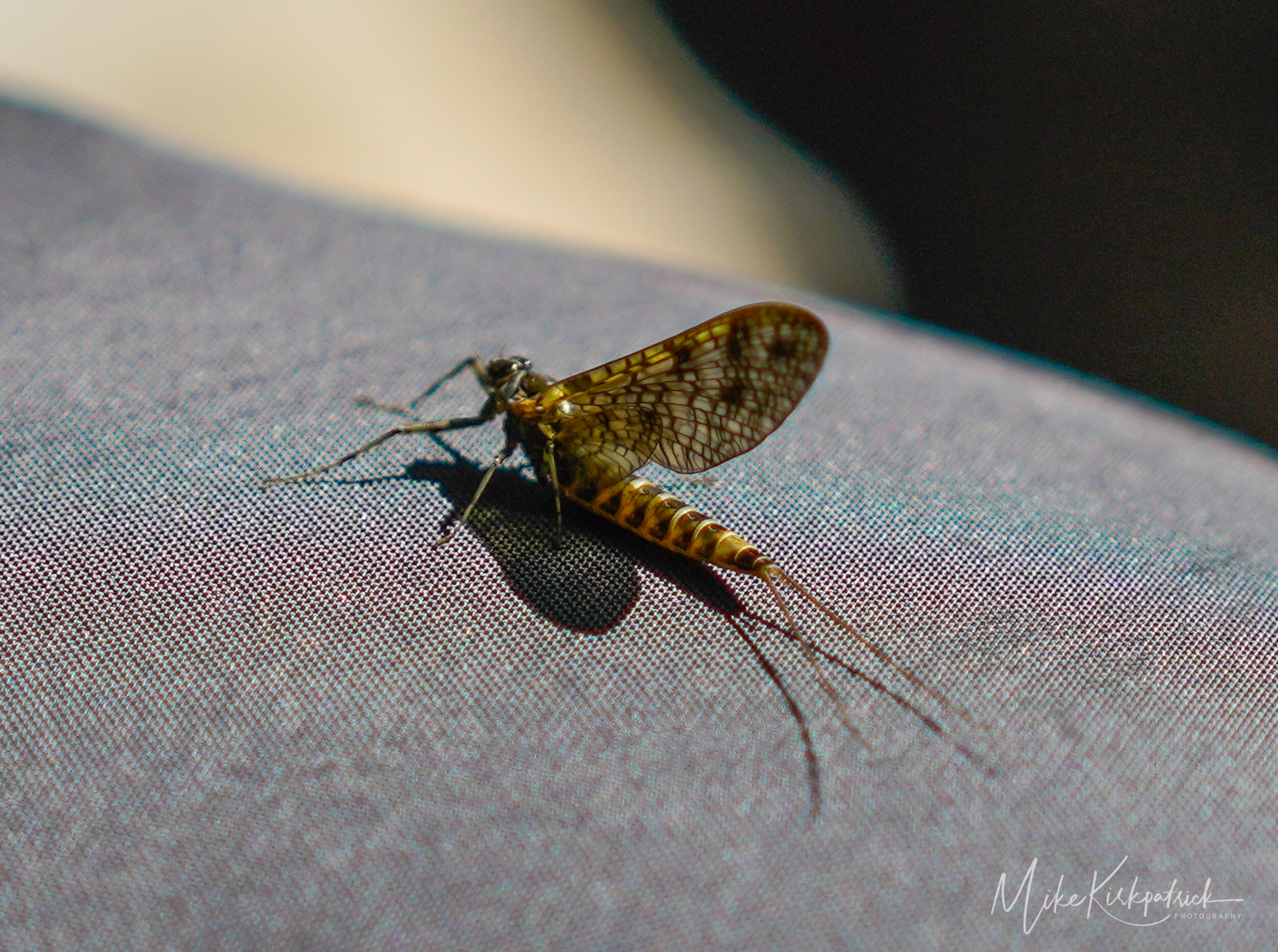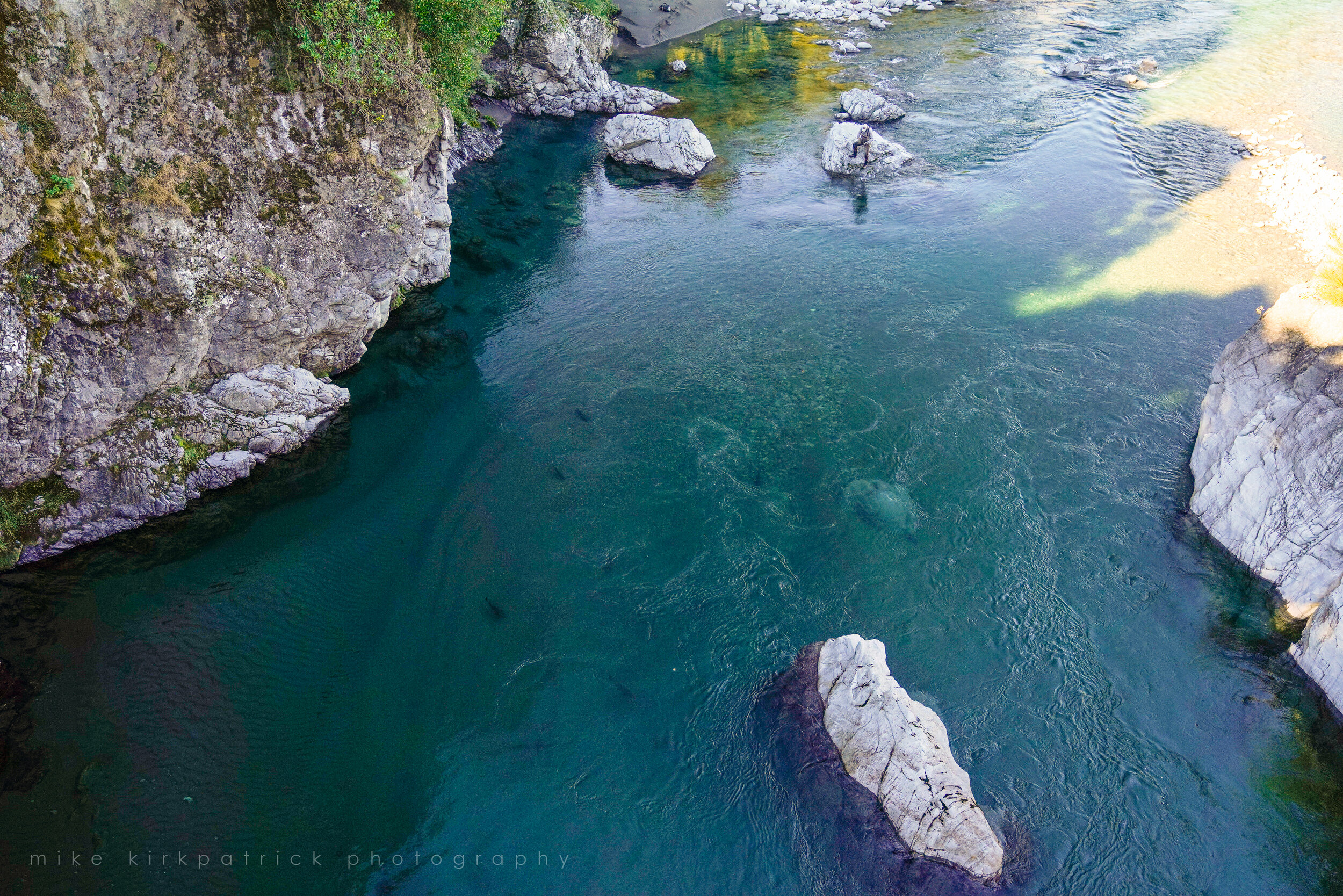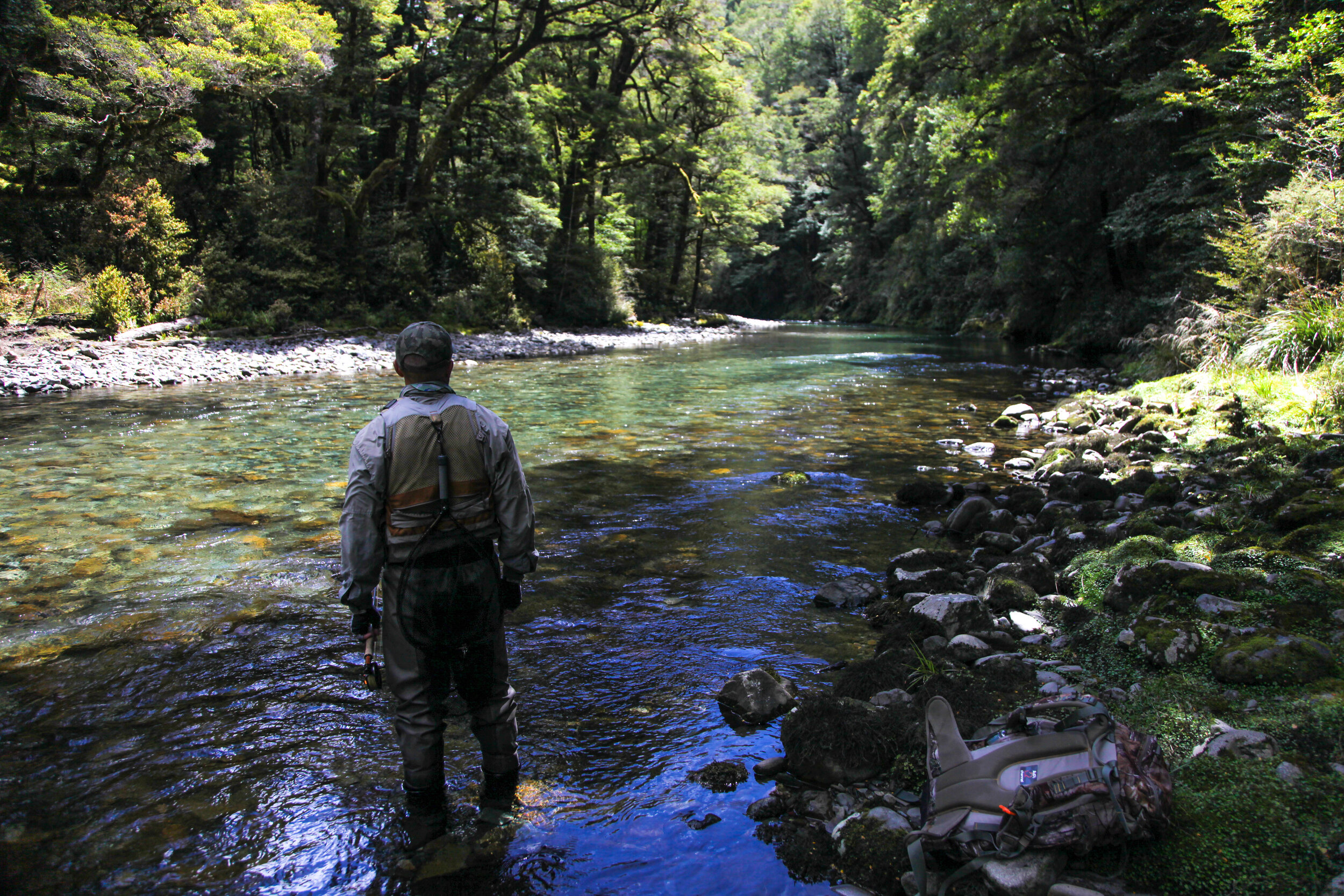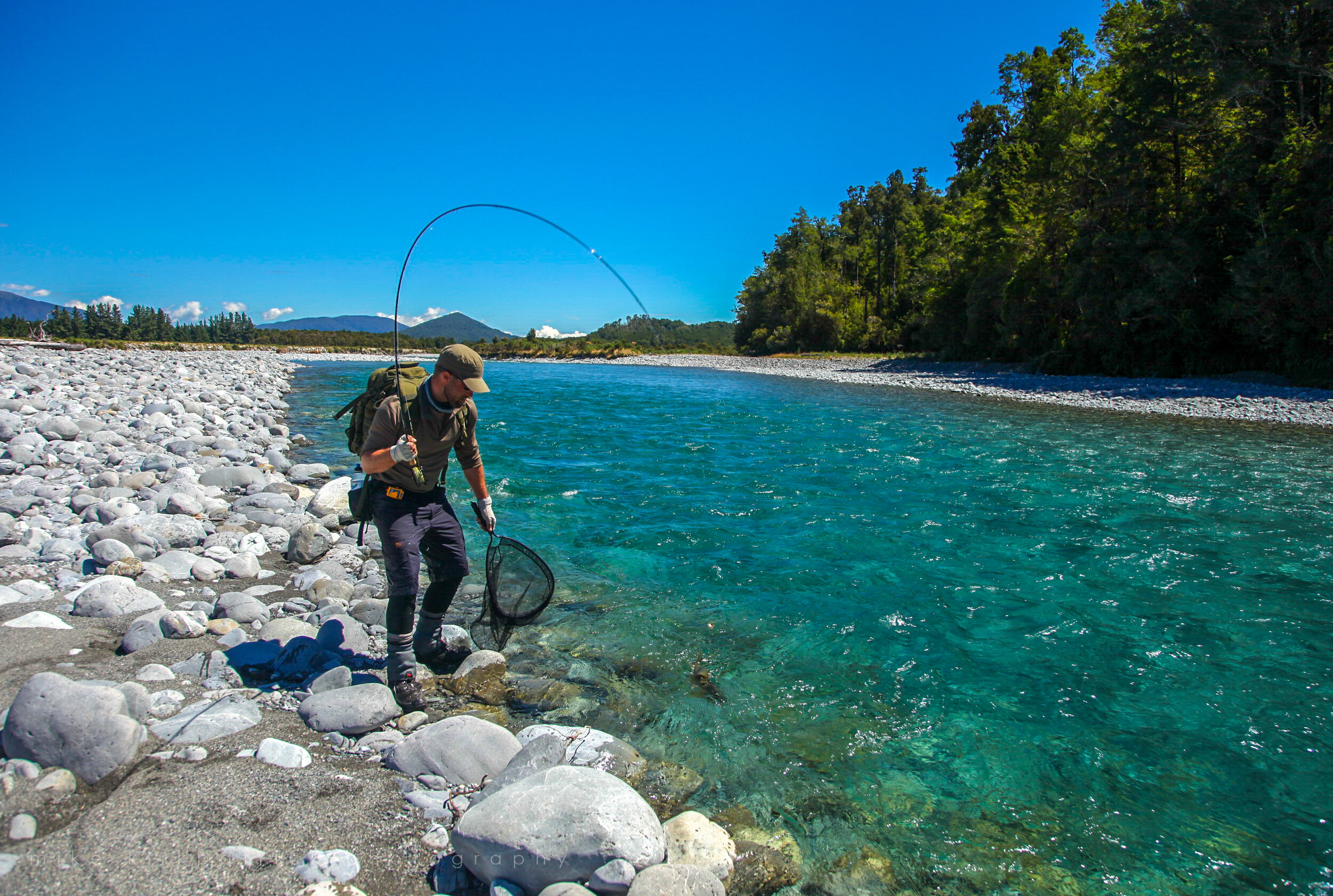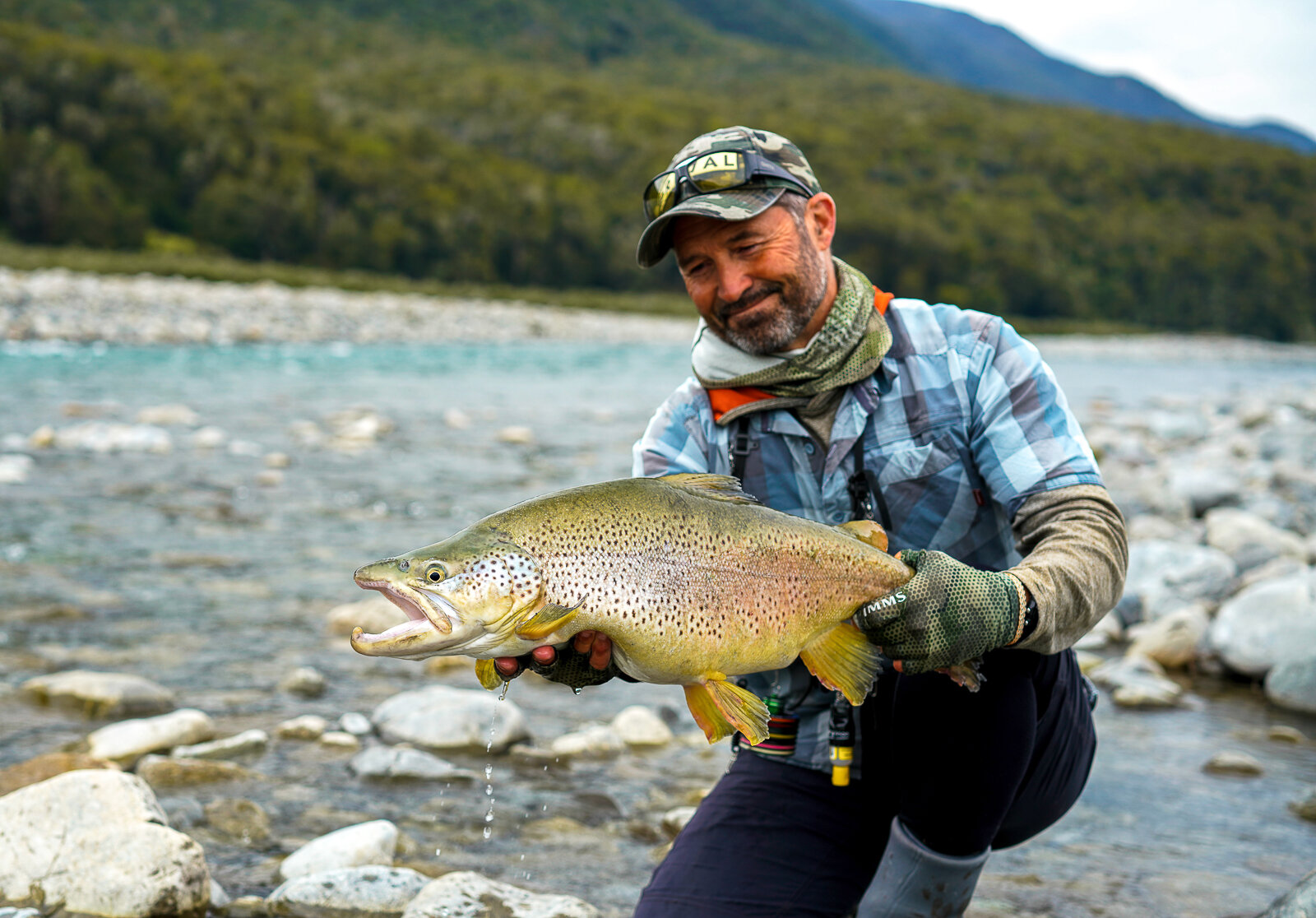
Mike Kirkpatrick
MIKE KIRKPATRICK
photos by Mike Kirkpatrick
1/ Choice of equipment, Rods, Reels, fly lines, floatants, clothing, sunglasses and other useful items.
This Rod and reel choice for dry fly fishing for me is generally lighter and more delicate here in New Zealand than nymph or streamer fishing. Traditionally our dry fly approach is upstream to large (by world standards) Brown and Rainbow Trout in gin clear water. The challenges of large wily trout in clear water dictates we use a balance of the necessary stealth, merged with the reality that these fish will exploit any weakness in gear very quickly. Softer tipped rods of 7'6" to 9'6" and in the #4 and #5 class will allow for delicate presentations and protection of finer tippets, both on the set and during the ensuing battles. Reels with a quality drag and low start up inertia are a must, as is plenty of backing (50m minimum) Clothing choice follows the 'stealth is best' formula with dull earth tones matching the surrounding bush or hillsides as the trout here don't need any extra help in seeing you as you stalk in... For sunglasses, I personally use Smith 'Low Light Ignitors' which are a polarised Techlite glass lens and simply the best for overcast days and evening stalking as they don't darken much beyond what you see with the naked eye, giving you a decided edge in less than ideal conditions. To keep dries floating, it's hard to go past the tried and true Mucilin made in England, as its waxy, and minimal dressing is needed to keep your dry floating like a cork all day. I prefer this type to the oil based silicons. Flyline choice is very subjective, but for the most part I use a WF Floating in a presentation style long front taper and in a dull neutral colour. I have developed over the years, a unique system of integrating a section of floating poly-leader into the end of my fly line and adding a standard monofilament tapered leader of maybe 3x to that. From there I add sections of tippet dropping down in size until I reach the desired 'x' I want the fly attached to. This allows for a total leader length of 18-24 feet depending on the situation that lies in front of you. This might seem extreme, but large, educated trout in crystal clear water will simply not tolerate any invasion into their space. This 'invasion' can be anything from the fall of tapered leader on the water too close which lights up their lateral line (and the inevitable spooked fish) to the sighting of a leader too close as you push the heavier sections of line within their cone of vision.
2/ Leader material, build up, length and knots.
I touched on this in the previous question, but to elaborate a little more, I use very long leaders (18-24ft) here in NZ simply because the situations we often face demand so for any sort of consistency in success. The trout here are large and wily, and as they are far fewer in number, than say their American counterparts, have little in the way of competition for food. This has the effect of giving them the luxury of time when inspecting a likely item of food, and also the sense of what is right and wrong in their uncrowded kingdom. So, from an anglers perspective, any 'tick' on the surface from the fall of fly-line, tapered leader or even tippet, can either spook or induce a sense of un-ease that will make them nigh on impossible to catch. Very long leaders allow any disturbance from your leader/fly-line to be far enough away from your quarry so as to eliminate this from being an issue in your presentation. Another major advantage of long leaders is the added 'slack' you can impart using one of many slack line casting presentations. You can still lead the fish the desired amount, have the fly-line well away, and ensure a drag free drift. Perfect drifts are essential everywhere, but it would seem, more so here as the fish have so much time to weigh things up. Any hint of drag is not only treated with distain, but often can put paid to any more shots with a spooked fish. The knots I use usually are the clinch or improved clinch, or blood knot but my advice is always tie what you are familiar with as this will give you the confidence to put the necessary pressure on when it counts.
3/ Approach and stealth.
Again, I alluded to much of this in my opening preamble, but approach is one of the elements I most impress upon my clients to get right. A trout looking to the surface is often in a fairly exposed position and they know it. Therefore, any sudden movement, sound or flash of light will send them scurrying for cover, such is their heightened sense of vulnerability. It makes sense to slow your approach, wear dull clothing, and keep your casting stroke low and to the side to minimise the chance of alerting them to your presence. Consider the sun, background, and water surface texture when stalking into position on a sighted fish. I get very close, often freaking my clients out in the process, as I want the best drift and best contact on the set. I do this ONLY after considering all factors I just alluded too.
4/ Reading the water.
One of my best attributes as a guide, is reading water. I study carefully even the tiniest of micro currents to give myself and clients the best chance of success. The trouble with this though is even the best slack line casters can't get a perfect drift every time if you are too far from your target. My simple solution to this is get as close as you can. This is where the previous issue of approach marries perfectly here. If you have an understanding of what a trout can see, you can combine that with understanding current variations and speeds to get the prefect drift. To achieve this, my favourite option is close-in high-sticking. Having the fly-line off the water and using a rod of 9-11ft to manage your drift through to the fish, eliminates most of your drag issues by leaving only the fly and a few inches of tippet touching the water surface. Simple but effective.
5/ Casting ability, which casts are essential.
Anyone who can cast a fly, can catch a fish on a dry. That said, the better your casting stroke, the more fish you can cover with a variety and length of cast you'll be able to produce. The ability to throw slack line casts, either upstream, down or across, will be the single most determining factor in how many fish you catch on a dry. Fly choice is often important, but getting the fly there with a good drift is even more so. Parachute casts, wiggles, reaches and curves all have their places, but the hardest part is often knowing when to use each one (or even a combination of). Instruction and time on the water are the ways forward here...
6/ Entomology, what should we know.
Intimate knowledge of the life cycles of in-stream invertebrates can make you a social pariah If word gets out so keep this knowledge away from the general public! Seriously though, a basic understanding of Mayfly, Caddis, Stonefly and Midge life cycles will make you a better angler. From a dry fly anglers point of view, what is (or even likely to be) happening on the water can be the difference between success and abject failure. Are the fish feeding on emerging duns, targeting trapped spent spinners or even returning egg layers? Do the slashing takes suggest adult caddis scurrying for cover in the lakeside reeds? An understanding of not only the basics of entomology, but a more specific local knowledge of, will give you the answers that will see you tying on the right fly more quickly than would otherwise be the case. The difference between a take or refusal.
7/ Rise forms, can they tell us something?
A trout rise can be as subtle as a soft ripple, to an eruption of water and a fish crashing back to the surface. The rise of a trout is dictated by what their prey is doing. A spent mayfly spinner is a trapped and dying insect needing only a leisurely approach and gentle sip to dispose of, while a large terrestrial such as a Cicada or Grasshopper can involve a very aggressive and water displacing grab. Often the rise to a hatching dun leaves a few bubbles accompanied by an audible 'pop' as the upper jaw clamps down on the surface. An emerger rise is normally almost silent and more a swirl than a rise with the fish 'nosing' the surface subtly. The point here is fish know what an insect in a given situation will do and that if that insect is trapped, the rise form is seldom rushed or aggressive. On the other hand, if the prey item is struggling to free itself or fleeing the scene of the crime, it is often summarily dismissed with extreme prejudice! Given this visual situation appraisal option, you can work out fairly quickly how to narrow down what trout are eating. Another option is a fine mesh seining net to gather samples. Simple but effective.
8/ Fly selection, size, shape, materials, which flies are essential, favourite fly.
My personal belief on how essential exact imitations of dries are, is that they needn't be as much so as nymphs. What I mean is that nymphs are seen three dimensionally as they are 'in' the water and can be seen from all sides by a trout. Dries on the other hand are seen more as an 'imprint' on, or in the surface, therefore a more two dimensional visual footprint if you will... Using that rationale, a basic pattern tied using size and colour is normally all that is needed here and how it is presented is of more importance.
9/ Presentation and drifts.
Again I've touched on this already but as an old mentor once told me "Mike, the secret to fly fishing here is the three P's.... presentation, presentation and (you guessed it) ‘presentation’. This has stayed with me throughout my fishing and guiding career. The old adage of selecting a suitable fly and putting the damn thing in the right place with the right drift has never changed.
10/ Upstream or downstream?
In NZ, upstream dry fly fishing is seen as the ultimate in fly fishing. I guess its partly anyway, our English roots. That said, I tend to prefer coming in from side on or even drifting flies down onto a feeding fish from above. The reasons for this are fairly simple, in that the first thing the trout sees is the fly, not the telltale tippet line in the film that you get when approaching from downstream. Setting the hook in the upstream position however, pose another problem when it comes to setting the hook. Downstream sets pull the hook back into the scissors of the trouts mouth with this corner 'V' acting as a stopping point for the fly and helping to secure it firmly. Upstream sets tend to pull directly back out of the mouth and lacks the 'V' stop for the hook. My work around here is to drift down and slightly off to the side so the fish turns a little to take and I set to the opposite side.
11/ Fighting fish.
Fighting fish here in New Zealand comes down to three parts. Rod weight and tippet strength, size of quarry and surroundings. I don't mess around with fishing 4wts if the water I'm fishing holds fish up around the 10lb mark as I don't want to run out of power to land them and also the ethical justification of stressing a big fish too much with too light a rod. Don't take a pea shooter to a gun fight. Use the appropriate tippet strength according to the size of your target, and surrounding water. By this I mean if there are snags and big rapids present, you need to up your tippet size to allow you the power to dictate terms when push comes to shove. I'll use light (down to 4lb test) tippet if my rod has a soft enough tip and the river is snag free. You can land surprisingly large trout on light tippet and still land them very quickly if you trust both your knots and ability to play the fish hard. Low rod angles at the right time and a mate who knows how to net fish can make the dramas of landing big fish evaporate into the euphoric moment of success. Play them hard and they will swim away even harder. Tight lines. Mike.
